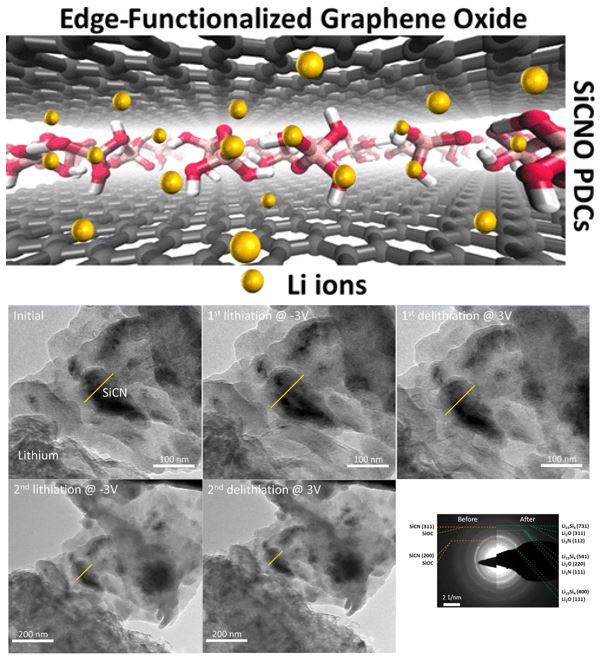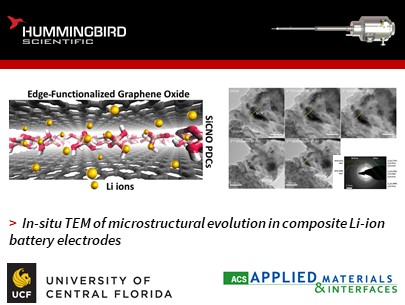Researchers at the University of Central Florida (UCF) have studied the structural integrity of a novel composite electrode composed of a polymer-derived ceramic nanoparticle and edge-functionalized graphene oxide during electrochemical lithiation and delithiation cycles for battery applications. The researchers assembled a prototype nanobattery cell components such as lithium metal and SiCNO composite and performed in-situ TEM lithation and delithation for at least 2 cycles using Hummingbird Scientific Biasing Manipulator TEM holder. The observed results demonstrated extraordinary structural stability of the SiCNO nanoparticles with only a 9.36% linear expansion during the lithiation (See Figure below). The lithium storage proceeded with two steps mechanism – (1) lithium intercalation in the graphitic carbon and (2) alloying with SiO2 and Si3N4 domains. The results are reported in the recent issue of ACS Applied Materials and Interfaces.

Reference: Zeyang Zhang, Jean E. Calderon, Saisaban Fahad, Licheng Ju, Dennis-Xavier Antony, Yang Yang, Akihiro Kushima, and Lei Zhai. “Polymer-Derived Ceramic Nanoparticle/Edge-Functionalized Graphene Oxide Composites for Lithium-Ion Storage,” ACS Applied Materials & Interfaces (2021). Full paper
View All News

